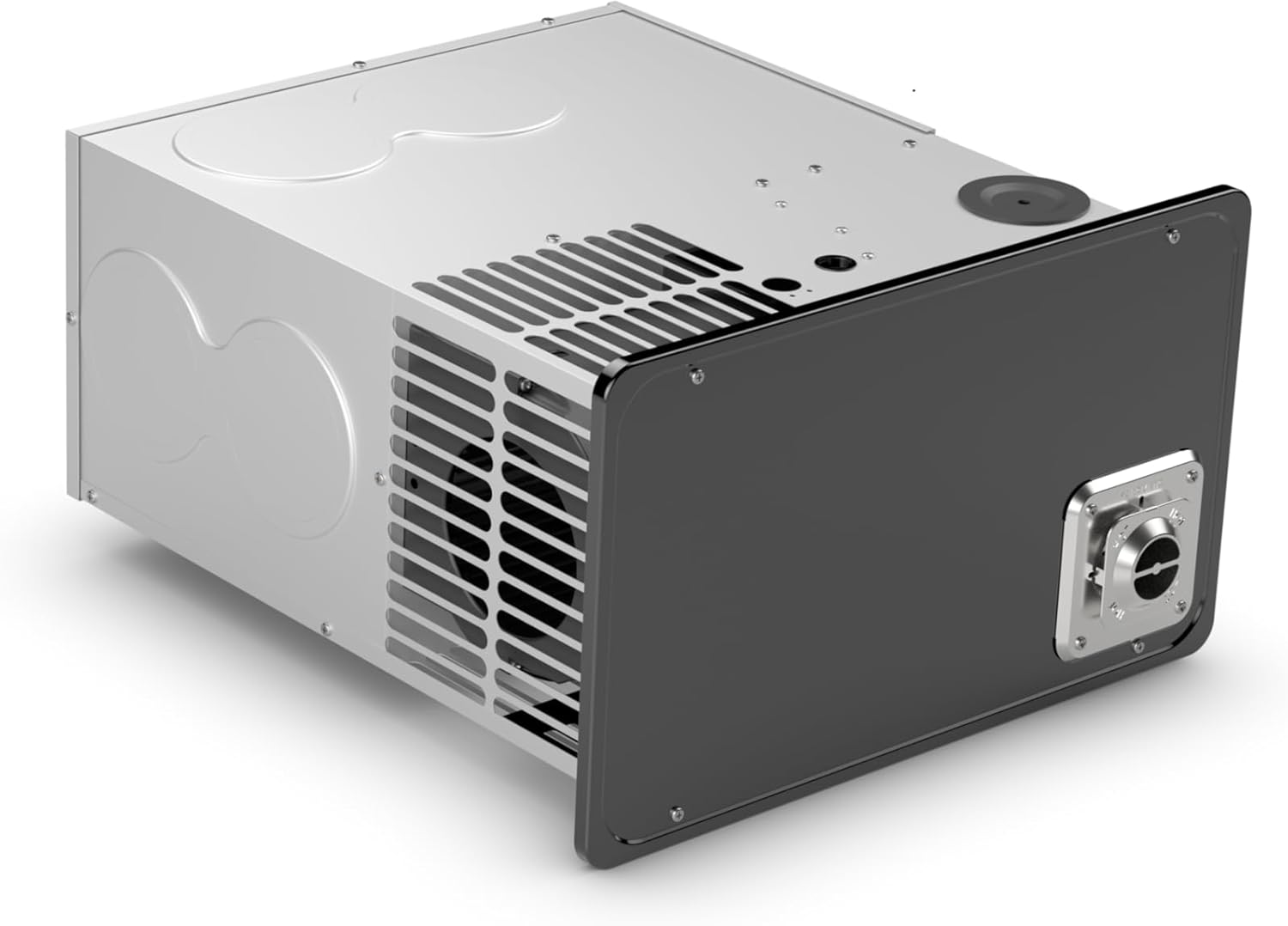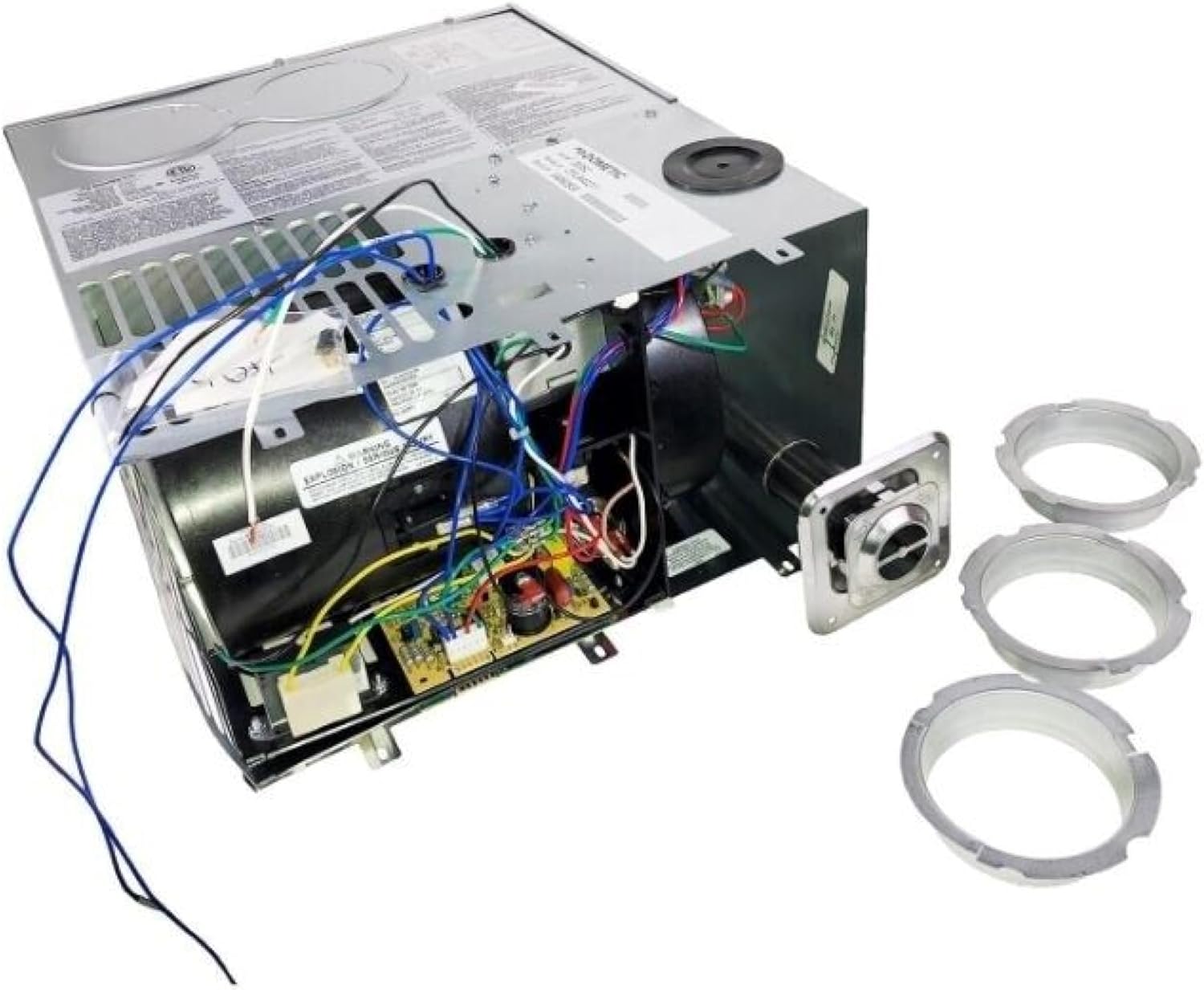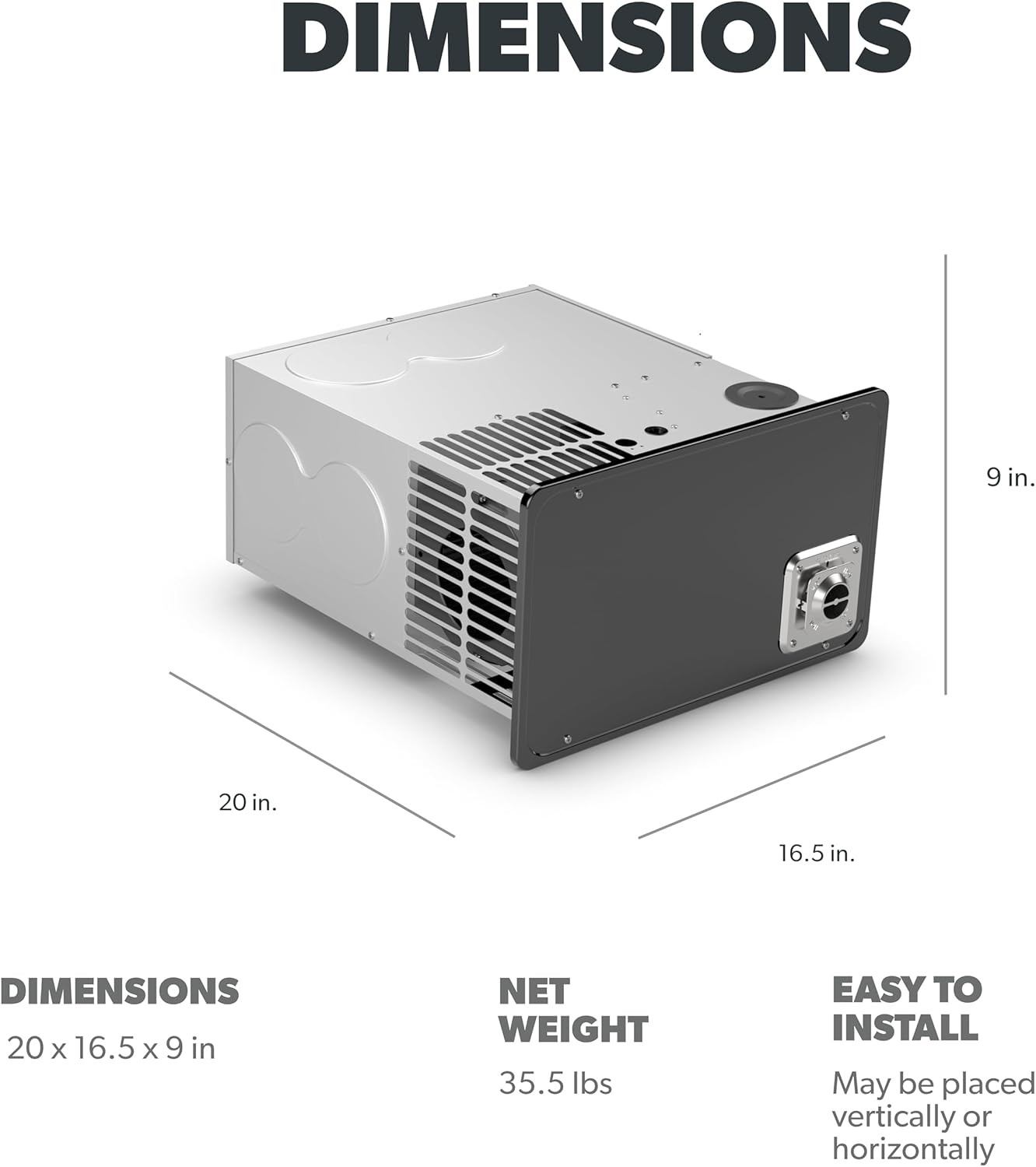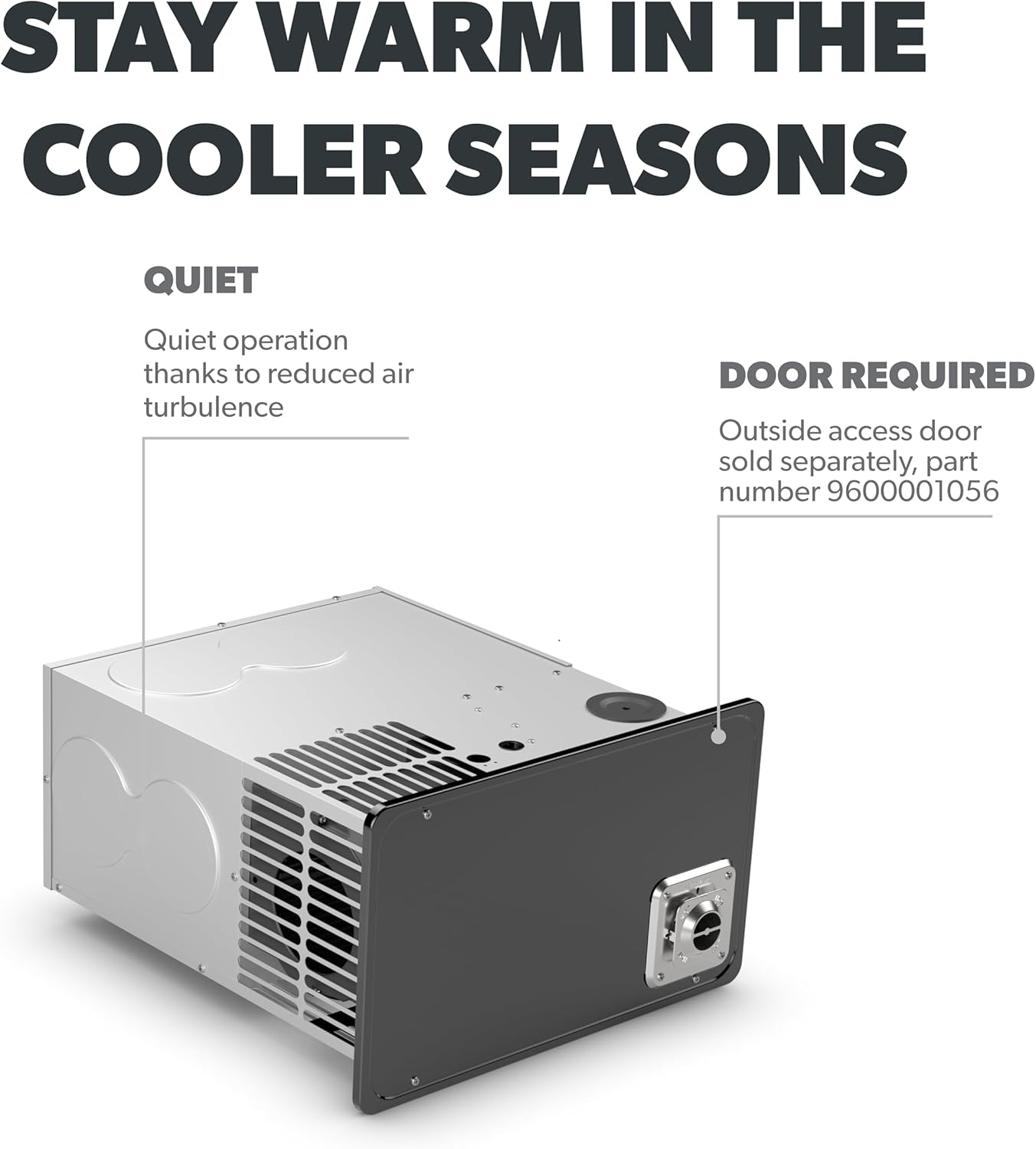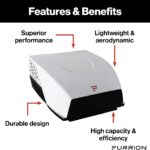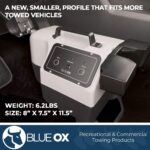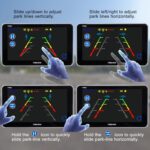Looking for a quiet, compact furnace that fits in tight spaces and still warms your whole RV efficiently?
Overview of Dometic DFLA40211 Large Furnace – Low Profile with Flexible Installation and Quiet Operation – 40K BTU Furnace for RVs, Trailers, and Campers
You’ll find that the Dometic DFLA40211 is built to give you strong heating performance while staying compact enough for tight installations. It’s designed for RVs, trailers, and campers that need an efficient 40,000 BTU output with flexible placement and low noise so you can sleep or relax without disruptive blower sounds.
You’ll also notice that Dometic emphasizes installation flexibility and easy maintenance, which can save you time and hassle during both fitting and seasonal servicing. The idea is to give you a heater that fits your layout and stays out of the way when in use.
Dometic DFLA40211 Large Furnace - Low Profile with Flexible Installation and Quiet Operation - 40K BTU Furnace for RVs, Trailers, and Campers
Key Features
You’ll appreciate clear, practical features that aim to make installation and day-to-day use easier. Below are the primary attributes and why they matter for your RV or trailer.
Quiet Operation
You’ll benefit from reduced air turbulence within the casing and ducts, which helps the furnace run more quietly than many older or more rudimentary models. Quiet operation means night-time temperature control without the furnace becoming a nuisance.
You may still hear some airflow and fan motor sound at higher blower speeds, but the design prioritizes minimizing intrusive noise so your onboard environment stays peaceful.
Flexible Installation
You can install this unit vertically or horizontally, giving you the choice to match your available space and layout. This flexibility is especially useful when you’re dealing with compact floorplans, under-bed compartments, or limited closet spaces.
You’ll find that flexible mounting reduces the need for costly rearrangements or custom cabinetry. It makes the furnace a better fit for retrofits and upgrades as well as new builds.
Versatile Duct Configurations
You can route ductwork in multiple ways to deliver heat exactly where you want it, whether that’s toward the living area, bedroom, or bathroom. The model claims one of the widest ranges of ducting configurations available to RV furnaces.
You’ll have more control over balancing warmth throughout your vehicle, which reduces cold spots and improves overall comfort on chilly mornings or during extended winter travel.
Easy Maintenance
You’ll notice maintenance points are accessible and designed to be user-friendly, reducing the time and effort required for routine cleaning and service. The unit’s layout helps you get at components quickly for checks or small repairs.
You’ll also benefit from straightforward air delivery pathways that make inspecting vents and blower areas simpler, so seasonal maintenance becomes less of a chore.
Compact Size
You can fit this furnace into smaller spaces than many comparable 40K BTU units without sacrificing output. That compact profile helps preserve storage and living areas while still delivering strong heating capacity.
You’ll appreciate lighter weight during installation and fewer structural modifications, which can lower installation time and potential labor costs.
40,000 BTU Heating Capacity
You’ll get a 40K BTU rating that’s intended to heat larger trailers and mid- to large-sized RVs under typical conditions. This output should be adequate for most three-season and many winter conditions depending on insulation and local climate.
You’ll want to match the output to your RV’s size and insulation quality; higher BTU is helpful for colder climates and larger internal volumes, while smaller rigs can often manage with lower outputs.
Quick Feature and Specification Table
You’ll find this table useful to compare core details at a glance. It pairs what the furnace offers with what that means for your RV use.
| Feature | What it Means for You |
|---|---|
| 40,000 BTU Output | Strong heat for medium to large RVs and trailers; good for cold mornings and extended stays. |
| Quiet operation / reduced air turbulence | More restful interiors and less intrusive blower noise while heating. |
| Vertical or horizontal installation | Greater flexibility for placement in tight cabinetry, under beds, or inside storage compartments. |
| Multiple duct configurations | Ability to deliver heat to specific zones; reduces cold spots and improves comfort. |
| Compact & lightweight design | Easier mounting, less structural modification, preserves storage space. |
| Easy maintenance access | Less time spent on seasonal checks and cleaning; easier troubleshooting. |
You’ll use this table to quickly evaluate whether the Dometic DFLA40211 meets your spatial, noise, and heating needs.
Performance in Real-World Use
You’ll want to know how this furnace behaves once it’s installed and running on the road or at a campsite. Performance covers start-up behavior, steady-state heating, and temperature stability.
The unit is engineered to provide consistent warmth across living areas while keeping blower noise low. That consistency matters when you’re waking up to cold nights or trying to relax during a stormy afternoon.
Heating Capacity and Coverage
You’ll get a solid output suitable for large RVs and trailers when insulation is reasonable and windows are weather-sealed. The 40K BTU rating is sufficient to heat living areas and sleeping quarters in many rigs, though exact coverage depends on insulation, roof height, and window space.
You’ll notice faster recovery times after doors are opened when the blower matches the duct layout to the main living zones, preventing long cool-downs.
Heat Distribution and Zoning
You’ll have the freedom to direct warm air where it’s most needed: toward the front living area, rear bedroom, or bathroom. Multiple duct layouts let you balance the heat to avoid overly warm or cold pockets.
You’ll see the biggest comfort improvements when you place registers strategically—near frequently used seating areas and sleeping spots—rather than trying to heat unused storage areas.
Start-up, Thermostat Response, and Control
You’ll find that most modern thermostatic controls will work effectively with the furnace, providing predictable on/off cycles and steady room temps. The furnace’s quieter fan minimizes disruptive cycles that older units can produce.
You’ll want to program your thermostat to account for thermal lag in larger RVs—setbacks and gradual temp changes will feel smoother with this unit compared to louder, more abrupt systems.
Fuel and Electrical Considerations
You’ll want to follow the manufacturer’s installation manual to confirm fuel type compatibility and electrical requirements for safe operation. RV furnaces usually integrate with your vehicle’s existing fuel and 12V systems, but exact hookups and configurations must match your rig.
You’ll reduce surprises by verifying fuel line fittings, electrical connectors, venting, and any required conversion kits before you or your installer begins work.
Noise and Comfort
You’ll value quieter operation especially for overnight use or while you’re napping during travel days. The Dometic DFLA40211 is designed to keep turbulent airflow and blower noise down, which preserves a calm interior atmosphere.
You’ll still hear some fan noise on higher settings and occasional burner clicks on startup, but overall the sound profile aims to be low and unobtrusive compared to older or less-refined heaters.
What “Quiet” Really Means
You’ll notice reduced whooshing and rattling because the furnace minimizes turbulence and uses sound-dampening measures where possible. That translates to fewer sleep disturbances and a calmer living space.
You’ll still want to mount the unit on secure surfaces and ensure ductwork is firmly attached, because loose or poorly connected ducts can create additional noise unrelated to the furnace itself.
Comfort While Sleeping or Resting
You’ll find the quiet fan and balanced heat delivery allow you to maintain comfortable temperatures overnight without constant audible cycling. This is particularly helpful if you’re traveling with children or light sleepers.
You’ll also appreciate the ability to place the furnace away from sleeping areas thanks to duct flexibility, further reducing perceived noise and increasing sleep comfort.
Installation and Flexible Mounting
You’ll appreciate the vertically or horizontally mountable options because they make fitting the furnace into unusual or tight spaces simpler. This flexibility often reduces the need for custom fabrication or costly reconfiguration of storage compartments.
You’ll still need to follow the manufacturer’s clearances, venting rules, and safety guidelines to ensure reliable, code-compliant installation.
Vertical vs Horizontal Placement
You’ll choose vertical placement when you have height available in closets or near external wall vents, and horizontal placement when under beds or benches offer limited height but ample length. Both modes are supported to match typical RV architectures.
You’ll want to confirm the orientation with the manual so airflow and condensate behavior stay within safe operational norms—incorrect orientation can impact performance and safety.
Ducting Options and Planning
You’ll have flexibility for duct routing—top, bottom, front, or side outlets depending on your layout and preference. You’ll be able to plan run lengths to minimize bends and keep friction losses low, which improves blower efficiency and reduces noise.
You’ll benefit from pre-planning where registers will go; measuring distances and deciding on full or split runs will save time during actual installation and help ensure even heat distribution.
Electrical and Venting Requirements
You’ll need to check electrical supply, fuse/circuit protection, and any control wiring required for your thermostat and blower. The furnace will also need proper venting through the exterior wall and safe clearance from combustibles per the installation instructions.
You’ll reduce installation headaches by confirming the exact vent size, termination location, and any adapter parts before you begin. Some RV installations require specific sidewall vents, roof terminations, or draft hoods that you’ll want to have on hand.
Professional Installation vs DIY
You’ll often save time and gain peace of mind by hiring an experienced RV technician for installation, especially where gas or complex venting is involved. A professional can ensure tight duct seals, correct fuel hookups, and compliant vent positioning.
You’ll be fine handling simple mounting and panel replacement if you’re mechanically inclined, but you should always defer fuel connections and gas leak tests to certified professionals for safety.
Maintenance and Serviceability
You’ll want a unit that’s easy to clean and service, and the Dometic DFLA40211 is designed with service access in mind. Regular maintenance keeps efficiency high and helps prevent unexpected failures mid-trip.
You’ll extend the life of your furnace by following a seasonal maintenance routine and addressing small issues before they grow into major repairs.
Recommended Service Schedule
You’ll want to inspect the furnace before each heating season and again mid-season if you use the unit extensively. Annual inspections typically include burner cleaning, checking thermocouples or flame sensors, and verifying vent integrity.
You’ll also want to check blower operation, clean accessible filters or screens, and ensure ducts are free from blockages to maintain airflow and heating efficiency.
Common Maintenance Tasks You Can Do
You’ll be able to clean registers, inspect visible ductwork for disconnections, and wipe accessible casing areas to remove dust. You can also visually confirm that the vent cap is clear and that exterior termination is not obstructed.
You’ll leave burner and internal component servicing, flame sensor checks, and gas valve adjustments to trained technicians unless you have relevant experience and tools.
Troubleshooting Minor Problems
You’ll often resolve issues like weak airflow by checking ducts for disconnections or blocked grill registers. If the unit fails to ignite, start by verifying fuel supply and electrical connections before moving to sensors or control boards.
You’ll keep a basic toolkit and spare fuses on hand so you can address common minor issues without a service call, but always avoid tinkering with gas components outside your skillset.
Duct Configuration Options and Layout Examples
You’ll appreciate practical layout examples that help you visualize the best way to route heat to living areas. The furnace’s multiple duct options offer flexibility for long coaches or compact trailers.
You’ll save energy by keeping duct runs short, minimizing bends, and placing registers where they will most effectively warm the space.
Sample Layout: Small Trailer (Single Zone)
You’ll place a single main duct run to the central living area with one or two registers feeding the primary space. This keeps installation simple and heat concentrated where you spend the most time.
You’ll need minimal ducting and fewer joints, which reduces heat loss and improves airflow.
Sample Layout: Mid-Sized RV (Two Zones)
You’ll route one main run to the living area and another to the bedroom area, using a short branch or damper to balance flow. This two-zone approach keeps sleeping areas comfortable without overheating the main lounge.
You’ll be able to fine-tune balance with adjustable registers or inline dampers if you notice one zone getting significantly more heat.
Sample Layout: Large Coach (Multi-Zone)
You’ll set up multiple branches with short runs to living spaces, kitchen nooks, and sleeping compartments. Use larger trunk ducts with smaller branches to minimize pressure losses and maintain even distribution.
You’ll want to use high-quality duct insulation in longer runs and keep bends gentle to reduce turbulence and blower workload.
Pros and Cons
You’ll find this balanced list helpful when deciding whether the Dometic DFLA40211 suits your needs. It highlights where the unit excels and where you might want to consider alternatives.
Pros
You’ll benefit from quiet operation, flexible installation (vertical or horizontal), and multiple duct configurations that let you customize heat distribution. The compact design saves precious storage and living space, and easy maintenance keeps seasonal servicing manageable.
You’ll also appreciate the 40K BTU output for larger rigs, which provides reliable heat for colder mornings and extended trips.
Cons
You’ll need to ensure correct venting and clearances for safe operation, which can complicate some retrofit jobs. You may also face higher upfront installation costs if you require substantial ductwork modifications or professional labor.
You’ll want to confirm part compatibility and warranty coverage in advance to avoid surprises when ordering replacement components.
Comparison with Other Furnaces and Brands
You’ll likely compare Dometic’s unit to other RV furnace options based on noise, flexibility, and power. Here’s how you can think about those comparisons without getting lost in brand specifics.
You’ll find that many competitors offer similar BTU ranges but may differ in size, noise control, and ducting flexibility. The Dometic DFLA40211’s strengths are its compact footprint and extensive duct configuration options, which are especially helpful for retrofit jobs.
How it Stacks Up on Noise
You’ll notice this Dometic model tends to be quieter than older furnaces and many entry-level units due to reduced turbulence design. If noise is a high priority, this model sits toward the quieter end of the range.
You’ll still want to compare actual user feedback for your specific rig, as duct routing and installation quality can be bigger noise factors than the furnace itself.
How it Stacks Up on Installation Flexibility
You’ll find few rivals that offer the same combination of true vertical/horizontal mounting and numerous duct layout options. If installation flexibility is a priority, this unit compares favorably.
You’ll benefit most from this flexibility if your RV has unconventional cabinet spaces or limited vertical clearance.
Who Should Buy This Furnace?
You’ll be a good candidate for this model if you own a mid-size to large RV, trailer, or camper and need strong heating with low noise. It’s also a smart choice if you anticipate constrained installation spaces and want multiple duct layout options.
You’ll find it especially helpful if you often camp in chilly conditions and value quiet nights and efficient heat distribution.
Ideal Use Cases
You’ll find the furnace well-suited for larger families or groups who use their RV in colder months and need reliable heat across multiple living zones. It’s also a good pick for owner/operators who retrofit older rigs and need flexible mounting options.
You’ll see the greatest value when you combine the unit’s quiet operation with thoughtful duct placement and planned thermostat control.
When to Consider Alternatives
You’ll want to consider other models if you have a very small trailer that doesn’t need 40K BTU or if you require the absolute lowest upfront cost regardless of features. Also, if you want a factory-integrated heating system with a specific OEM wiring harness, check compatibility first.
You’ll also weigh alternatives if you prefer a particular brand ecosystem or factory-installed aesthetics that match older models.
Installation Cost and Additional Parts
You’ll need to budget for more than just the furnace itself. Expect to account for ductwork, venting, termination kits, thermostats, and possibly labor if you use a professional installer.
You’ll save time by collecting all parts before installation—vent collars, insulation, duct tape/clamps, and any required adapters—so you can complete the job in one session.
Typical Additional Parts
You’ll likely need duct sections, flexible hoses or insulated ducting, clamps, register grilles, termination kit for the exterior, and a compatible thermostat or control head. Some installations also need conversion or adapter kits to match older duct sizes or vent cutouts.
You’ll avoid delays by confirming exact part numbers and sizes before you start or ordering an installation kit if Dometic offers one.
Labor and Time Expectations
You’ll find that professional installs can vary in time based on complexity—simple swaps may take a few hours, while complex retrofits with new duct runs and vent relocations can take a day or more. Labor charges will reflect local rates and the job scope.
You’ll save money if you handle non-gas tasks yourself, but always have a pro make final gas connections and leak-checks if your furnace uses combustible fuel.
Tips for Getting the Best Performance
You’ll get the most from your furnace by installing it thoughtfully and maintaining it regularly. A few practical tips will keep it running efficiently and quietly.
You’ll find small investments in duct quality and placement pay off in comfort and reduced energy use.
- Plan duct runs to minimize bends and length. Short, straight runs improve airflow and efficiency.
- Use insulated ducting in cold climates to reduce heat losses in long runs through unheated compartments.
- Balance registers with adjustable dampers to fine-tune temperatures between zones.
- Keep exterior vent terminations clear of snow, debris, and foliage to ensure safe exhaust and fresh air intake.
- Program your thermostat for gradual changes instead of wide temperature swings to reduce cycling and noise.
You’ll notice these steps make the system feel more responsive and prolong component life.
Troubleshooting Common Issues
You’ll find many common problems have simple fixes. This section helps you troubleshoot before calling a technician.
You’ll save time by checking the basics first—power, vents, and visible duct connections—before assuming a complex failure.
- Furnace won’t start: You’ll first check supply power, fuses, and any main breaker. Confirm fuel supply and that the thermostat is set correctly.
- Weak airflow: You’ll inspect registers and ducts for blockages and check blower operation. Loose duct joints can dramatically reduce flow.
- Excessive noise: You’ll look for loose ductwork, improperly mounted components, or obstructed vents before suspecting the furnace motor.
- Uneven heating: You’ll balance duct runs and add or relocate registers to reduce cold spots. Ensure insulation and seals on windows and doors are adequate.
You’ll want to keep a log of issues and conditions (outside temp, runtime, thermostat setting) to help diagnose intermittent problems.
Warranty, Support, and Parts Availability
You’ll want to validate warranty length and coverage at purchase and keep records of installation for warranty claims. Dometic typically supports dealers and service centers and has parts distribution that RV technicians commonly use.
You’ll find that having the model number and serial on hand speeds support calls and ensures you get the correct replacement components.
How to Prepare for Support Calls
You’ll write down the furnace model number, serial number, date of purchase, and installation details before calling support. Having pictures of the installation and any error codes can speed diagnosis.
You’ll also ask your installer to provide a post-install checklist and any component part numbers that might be useful for future repairs.
Finding Replacement Parts
You’ll source common parts like thermostats, blower motors, or vent caps through Dometic dealers, RV parts retailers, or authorized service centers. For complex items, dealer channels often have faster fulfillment than general marketplaces.
You’ll save time by ordering parts directly from authorized suppliers to ensure compatibility and warranty compliance.
Final Verdict
You’ll find the Dometic DFLA40211 Large Furnace – Low Profile with Flexible Installation and Quiet Operation – 40K BTU Furnace for RVs, Trailers, and Campers a strong option if you need high heat output, low noise, and flexible placement. Its compact size and multiple duct configurations make it particularly well-suited for retrofit jobs and rigs with limited space.
You’ll benefit most if you pair the unit with good duct planning, proper installation, and routine maintenance. If your priorities are quiet operation, flexible placement, and solid mid-to-high BTU output, this Dometic furnace should serve you well on extended trips and colder-season camping.
Frequently Asked Questions (Short)
You’ll find quick answers here for common buyer concerns.
Q: Is this furnace quiet enough for sleeping areas? You’ll generally experience quieter operation compared to older units; for best results, route ducts away from sleeping areas and ensure secure mounting.
Q: Can I install it myself? You’ll handle many aspects of physical mounting and ducting if you’re comfortable with mechanical tasks, but leave gas connections and final safety checks to a certified technician.
Q: Does it support zoning? You’ll create zoning through duct layout and dampers rather than built-in multi-zone electronics; effective zoning depends on duct planning and thermostat placement.
Q: What maintenance is required? You’ll do seasonal inspections, clean registers, and visually check vents. Have a professional inspect burners, sensors, and control components annually.
You’ll now have the detailed information you need to decide whether this Dometic furnace fits your RV heating needs. If you want, you can tell me about your RV layout and I’ll suggest specific duct layouts and placement tips tailored to your rig.
Disclosure: As an Amazon Associate, I earn from qualifying purchases.
